Camphorweed
Camphorweed
Heterotheca subaxillaris (Lam.) Britt. & Rusby
(also listed as Heterotheca latifolia Buckl.)
Asteraceae (Aster Family)
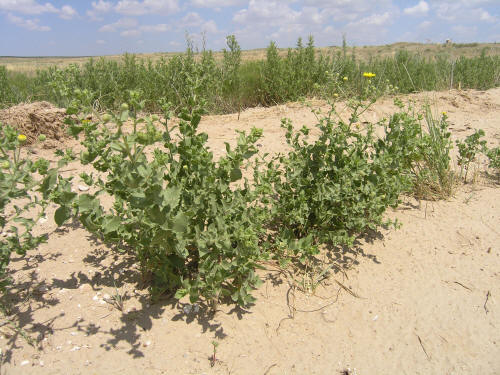
▲ ▼ mature flowering plants
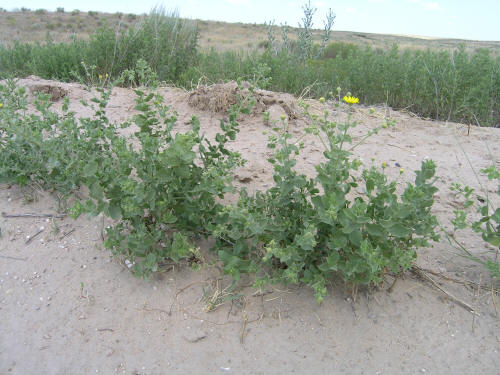
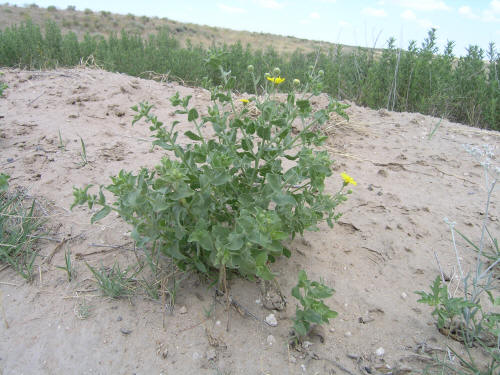
▲ ▼ mature flowering plants
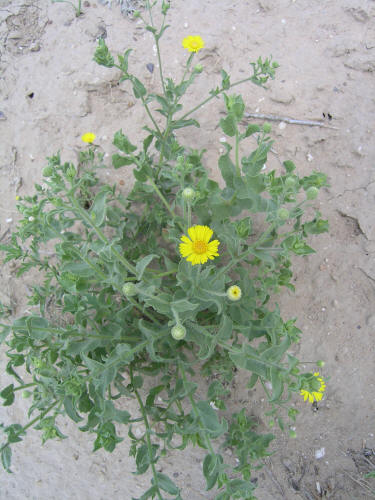
▲ ▼ flowers
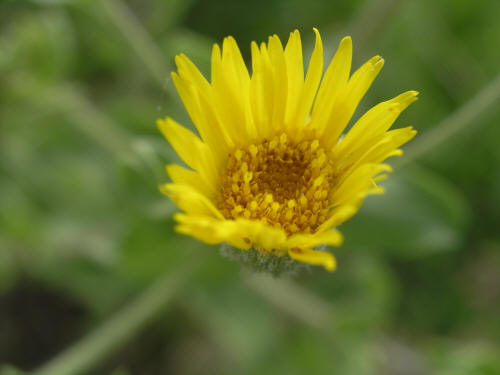

▲ above flower's tiny yellow dots on stem and bracts below inflorescence are the resin glands
▲ stem and leaves
Heterotheca subaxillaris (Lam.) Britt. & Rusby, Camphorweed (also listed as Heterotheca latifolia Buckl): (Bayer Code: HTTSU; US Code HESU3)
- U.S. native summer annual (sometimes biennial or short-lived perennial) with a tap root, that produces round, ridged, green to reddish-green, hairy, gland-covered, stems that grow 0.5 to 5 feet tall; stems usually upright, but sometimes leaning, with few to many branches, usually more in upper portions of the plant
- Leaves are alternate, oval, with toothed margins and round-pointed tip; leaves lack petioles and sometimes leaf bases clasp around stem; leaves are often wavy, twisting or undulating along their length; upper stem leaves may be more lanceolate with fewer or no teeth; leaves covered with soft (sometimes sticky) hairs and many glands that release a camphor-like odor when leaves or green tissues are bruised or crushed
- Head inflorescences are 1-2.5 inches in diameter, at stem tips, and have 15-35 ray flowers (“petals") and 25-60 yellow center disk flowers
- Bracts below the inflorescence form a cylindric shape and are linear, hairy, with pointed tips, and are arranged in several overlapping rows; bract tips may be purplish
- Flowering is from late summer until frost
- After flowering the center disk of the flower head becomes a globe of tan hairs from the pappus (parachute-like hairs) attached to the mature
- The hairy (almost sticky-hairy) stems, twisting/curving leaves and obvious camphor/medicinal odor when plant is bruised help identify this autumn-flowering plant
(Updated November 25, 2022)